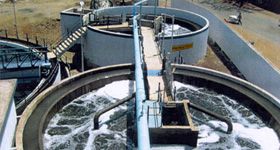- Chandigarh UT
- Creative Corner
- Dadra Nagar Haveli UT
- Daman and Diu U.T.
- Department of Administrative Reforms and Public Grievances
- Department of Biotechnology
- Department of Commerce
- Department of Consumer Affairs
- Department of Industrial Policy and Promotion (DIPP)
- Department of Posts
- Department of Science and Technology
- Department of Telecom
- Digital India
- Economic Affairs
- Ek Bharat Shreshtha Bharat
- Energy Conservation
- Expenditure Management Commission
- Food Security
- Gandhi@150
- Girl Child Education
- Government Advertisements
- Green India
- Incredible India!
- India Textiles
- Indian Railways
- Indian Space Research Organisation - ISRO
- Job Creation
- LiFE-21 Day Challenge
- Mann Ki Baat
- Manual Scavenging-Free India
- Ministry for Development of North Eastern Region
- Ministry of Agriculture and Farmers Welfare
- Ministry of Chemicals and Fertilizers
- Ministry of Civil Aviation
- Ministry of Coal
- Ministry of Corporate Affairs
- Ministry of Culture
- Ministry of Defence
- Ministry of Earth Sciences
- Ministry of Education
- Ministry of Electronics and Information Technology
- Ministry of Environment, Forest and Climate Change
- Ministry of External Affairs
- Ministry of Finance
- Ministry of Health and Family Welfare
- Ministry of Home Affairs
- Ministry of Housing and Urban Affairs
- Ministry of Information and Broadcasting
- Ministry of Jal Shakti
- Ministry of Law and Justice
- Ministry of Micro, Small and Medium Enterprises (MSME)
- Ministry of Petroleum and Natural Gas
- Ministry of Power
- Ministry of Social Justice and Empowerment
- Ministry of Statistics and Programme Implementation
- Ministry of Steel
- Ministry of Women and Child Development
- MyGov Move - Volunteer
- New Education Policy
- New India Championship
- NITI Aayog
- NRIs for India’s Growth
- Open Forum
- PM Live Events
- Revenue and GST
- Rural Development
- Saansad Adarsh Gram Yojana
- Sakriya Panchayat
- Skill Development
- Smart Cities
- Sporty India
- Swachh Bharat (Clean India)
- Tribal Development
- Watershed Management
- Youth for Nation-Building
Global practices to clean rivers

Start Date :
Jul 16, 2014
Last Date :
Sep 10, 2014
18:30 PM IST (GMT +5.30 Hrs)
This task requires you to share global best practices adopted to clean big rivers across the world.
This task requires you to share global best practices adopted to clean big rivers across the world.


instead of passing wastage of factories into the rivers, it must be disposed within the plant in a eco friendly manner , so that nothing should be mixed with rivers.
clean river water step by step from top to lower ......filtering the water in dam to dam ..............
rather then disposal of industrial or municipal waste direct into the river we should done a treatment over this waste water by using MBR Technology which is cheaper then any other method. by using technology industries can utilize the water for their manufacturing or boiler process which can also help in reducing expenditure..
Soil Biotechnology (SBT) is the true green sewage & waste water treatment technology which can be applied in a decentralized manner to prevent the water bodies like rivers & lakes from getting dirty as well as to clean them. Its net revenue generating technology.
Soil Biotechnology (SBT) is the indigenous sewage & waste water treatment true green technology. If SBT is amalgamated with floriculture it is revenues contributor......
they r protecting water quality 2 protecting water from every pollution 3 ensure environment sustainability 4intergrate the principle of sustainable development into country5 make policies n programes on cleans 6 improved escosystem service improved to live , health
Did you know that only 3% of the Earth's water is fresh-water? And of that 3%, 2/3 is trapped in glaciers and polar ice caps. That means only 1% of the Earths freshwater supply is accessible for use! This is why it is so important to conserve the limited amount of water that we do have.
Designing a toilet flush which can reduce our water consumption to 50% will help resolving the problems. Today even urine disposal is consuming same amount of water which is wastage of water because urine itself is 90% plus water. the larger is amount of water to treat, more is power and chemical consumption which is making our problem worse. so first thing to work out is optimize use of water and thus reducing waste water for treatment.
Automatic self working model for clean rivers
http://videos.oneindia.in/watch/2362/water-purification-with-japanese-stones.html VIDEO LINK IN WHICH IT IS EXPLAIN HOW CAN WE USE JAPANESE STONE TECHNOLOGY